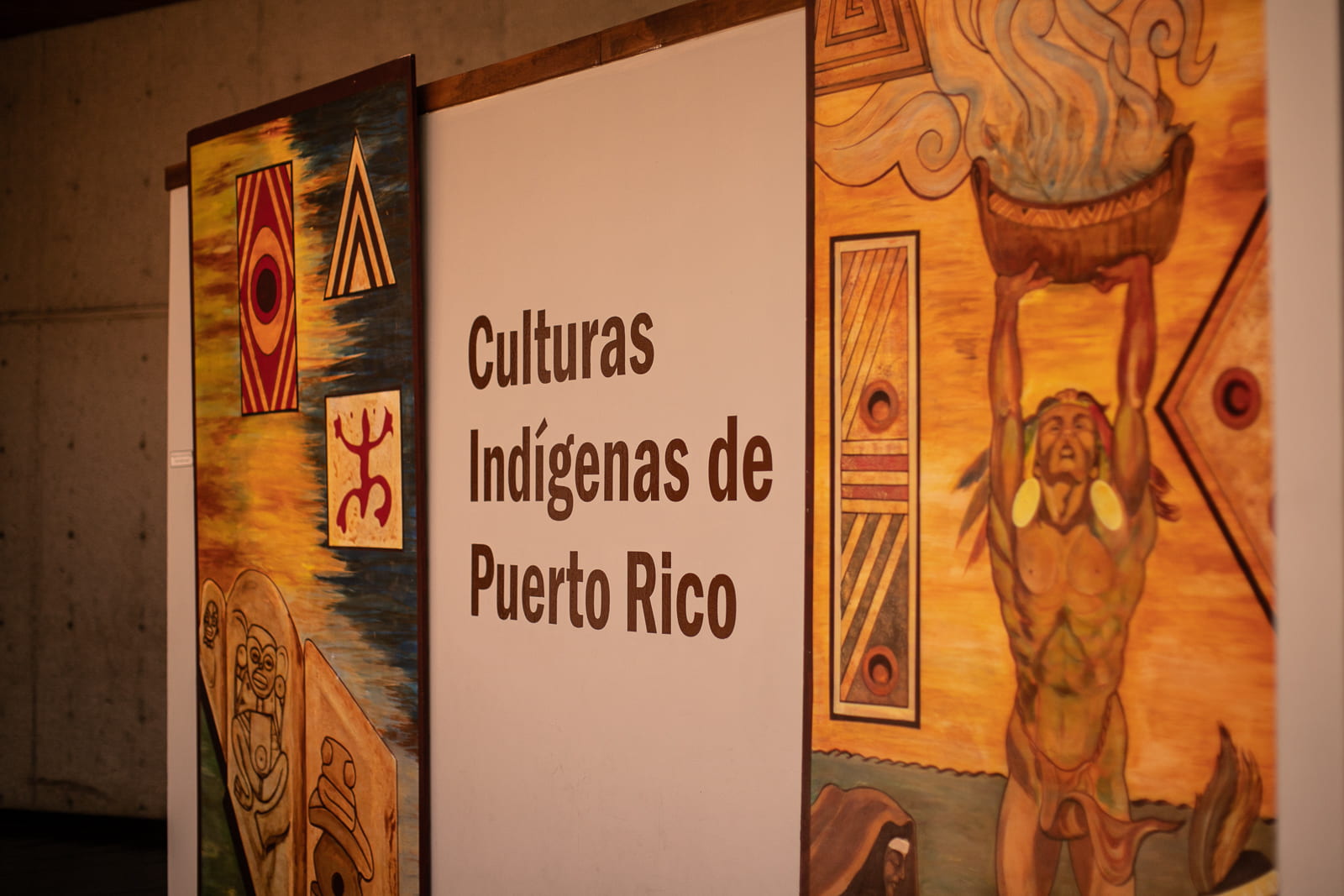
Photo by Sofía Pérez | A sign that reads, “Indigenous Cultures of Puerto Rico” in Spanish stands at the entrance to the Tibes Indigenous Ceremonial Center museum. The museum houses detailed information and artifacts about Puerto Rico’s four indigenous groups: the Arcaico, the Igneris, the Pre-Taíno and the Taíno.
By Pavithra Rajesh
PONCE, Puerto Rico – Centro Ceremonial Indígena de Tibes, or the Tibes Indigenous Ceremonial Center, sits just outside the picturesque town of Ponce, Puerto Rico. With the remnants of a stone-paved plaza and petroglyphs engraved into boulders amid a vast field, it is one of the most significant archaeological sites in the Caribbean.
But its existence is complicated. Aside from locals and tourists who frequent the site to learn about Puerto Rico’s origins, it is also visited by people who identify as Taíno, an indigenous people of the Caribbean. The center welcomes them, but does not publicly acknowledge their heritage, asserting that the true Taíno were eradicated more than two centuries ago. To many, Taíno people are extinct.
“How long has it been since there has been a pure Taíno Indian in Puerto Rico? The [answer] is possibly 200 years,” said Luis Martinez, a tour guide for the Tibes Indigenous Ceremonial Center. “You can identify [as Taíno]. I don’t knock that at all. It’s just that I’m more about the facts. This is a place of facts.”
The question of whether Taíno still exist isn’t specific to this center. For years, a surge in indigenous activism has led to increasing discourse around who gets to claim indigenous identity. Further adding to the conflict is that Taíno are not federally or state recognized as an indigenous tribe. The conversation ranges from DNA evidence to ancestral homelands to cultural practices and beyond.
For Taíno, doubts surrounding their identity have led to experiences of discrimination, on both community and individual levels – from issues of land rights and language revitalization to Taíno children harassed in schools.
While other indigenous communities face similar issues, the Taíno are particularly prominent against the backdrop of Puerto Rico’s complicated history. Puerto Ricans are American citizens. But between indigenous erasure, Spanish colonization and African slavery, the story of who the Taíno are and where they fit is complicated – and, for many, painful.

Photo by Pavithra Rajesh | A gate at the Tibes Indigenous Ceremonial Center is decorated with the Puerto Rican flag. Some Taíno advocates said that people trying to erase Taíno identity is part of a larger push toward one common Puerto Rican identity.
“They’re talking about our culture and presenting our culture in these ways where it’s from the archeological sense, that there’s no pure Taíno,” said Roberto Múkaro Borrero, president of the board of directors of the United Confederation of Taíno People, or UCTP, and a chief of the Guainía Taíno Tribe. “But [since] when do archaeologists have the right to define people, that’s not their role. They can talk about culture and timelines of culture, but all cultures change. We can’t help the colonization of our people, that’s just a fact that happened.”
In the eyes of organizations like UCTP, the Taíno are alive and well. There are more and more people identifying as Taíno in both Puerto Rico and in mainland U.S. states, like Massachusetts, New York and Florida. Their advocacy has led to further governmental recognition, especially through their involvement with indigenous remembrance celebrations, in places like Newton, Massachusetts, Los Angeles and the U.S. Virgin Islands.
Regardless of where they live today, members of the Taíno population believe they have a right to be acknowledged and respected as indigenous peoples. For most Puerto Ricans, whether they agree with the Taíno struggle for recognition or not, that question of identity rings true too.
“In the case of Puerto Rico, people are looking for identity, for belonging,” said Antonio Curet, a curator of the Smithsonian Institution’s National Museum of the American Indian in Washington D.C. “People are trying to find themselves. That’s another issue.”
The history of Taíno people and DNA evidence
If there’s one thing both Taíno and academics agree on, it’s that history is written by the victors – in this case, Puerto Rico’s colonizers. A simple Google search about Puerto Rico’s indigenous history implies to the average person that the Taíno were the first inhabitants of Puerto Rico. However – starting from 4,500 years ago – there were three indigenous peoples that preceded the Taíno: the Arcaico, the Igneris and the Pre-Taíno. By the early 1400s, they eventually evolved into the Taíno, the first – and only – people Christopher Columbus ever met.
“People get just about everything wrong as far as what our natives were,” said Martinez. “The end-product was the Taíno. But a lot of people don’t know there were other groups that evolved up to the Taíno, and that’s some of the problem. The only contact Europeans had was with the late Taíno, and that was very brief.”
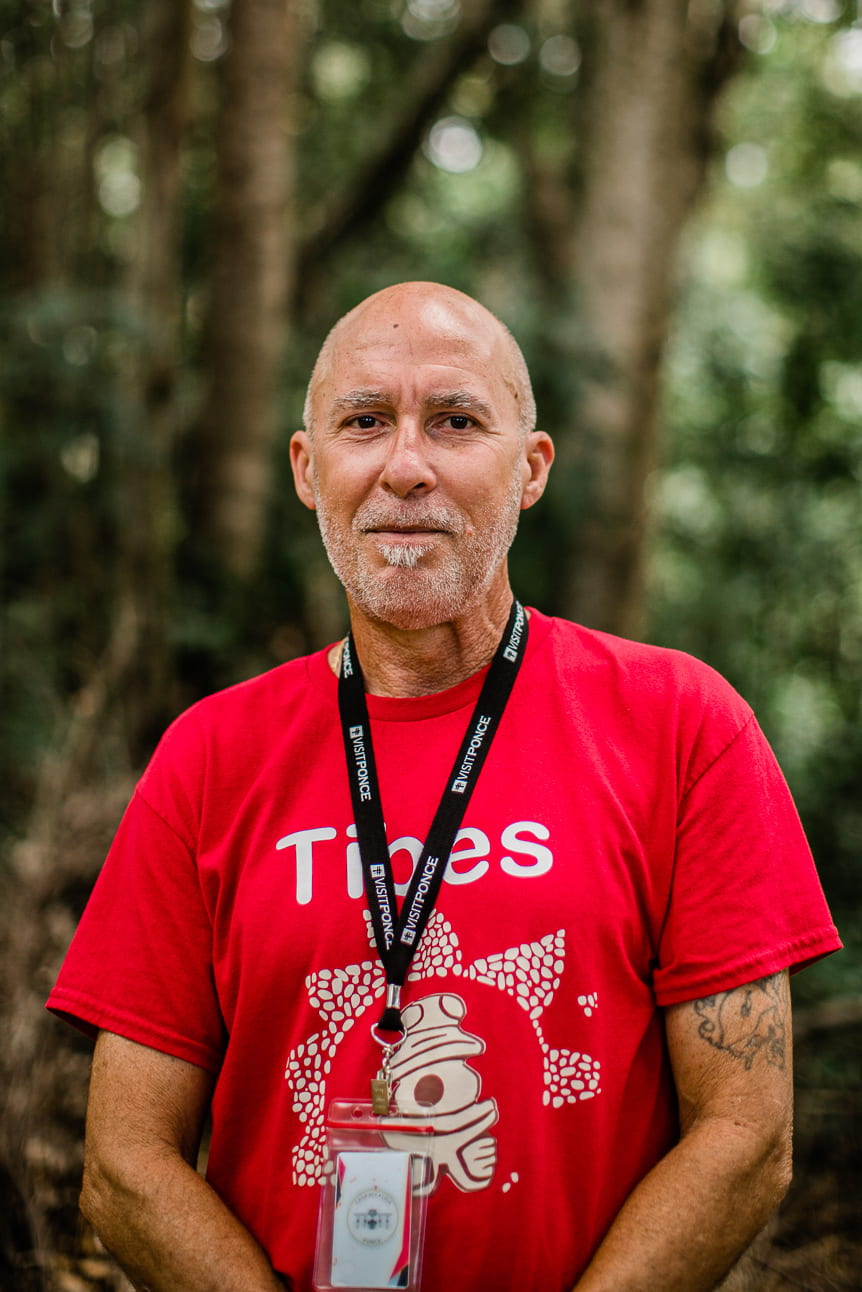
Photo by Sofía Pérez | Luis Martinez, a tour guide for the Tibes Indigenous Ceremonial Center, poses for a photo. Before joining the field, Martinez said he had many misconceptions about Puerto Rico’s indigenous history, which is why he cares about informing visitors about the facts of their native communities.
Brief, indeed. Beginning in the early 1500s, Spanish colonization brought starvation, disease, slavery and warfare to Puerto Rico. Consequently, the Taíno, as an independent people, were said to be eradicated by the 1560s. However, many Taíno procreated with Europeans and Africans.
For that reason, it is generally understood that most modern-day Puerto Ricans are a mix of indigenous, European and African ancestry. Studies by Juan Martinez-Cruzado, a professor in the department of biology at the University of Puerto Rico, Mayagüez, Puerto Rico, revealed that indigenous DNA is prominent.
His 2001 study entitled, “Mitochondrial DNA Analysis Reveals Substantial Native American Ancestry in Puerto Rico,” reads, “…despite the fact that the native Taíno culture has been extinct for centuries, the Taíno contribution to the current population is considerable and some of the Taíno physiognomic traits are still present.” The study found that 69.6% of a sample set who claimed Native American ancestry showed a high frequency of Native American mtDNA. His study conducted in 2003 entitled, “Reconstructing the Population History of Puerto Rico by Means of mtDNA Phylogeographic Analysis,” revealed Puerto Rican maternal ancestries to be 61.3% Amerindian, 27.2% sub-Saharan African and 11.5% West Eurasian.
Nevertheless, using DNA evidence to qualify indigenous identity has long been controversial. It raises the question of genetic “purity” and how much that influences an individual claiming a specific heritage. The Taíno agree they have mixed ancestry. They don’t all still live in Puerto Rico, either.
Chali’naru Dones, a resident of Newton, Massachusetts, was born in Boston to a Puerto Rican family. She said she always knew she was Taíno, and her DNA shows strong indigenous ancestry, with 24% of her ancestry.com profile showing “Indigenous Puerto Rico.” But it doesn’t completely define her identity.
“Nothing is pure today, that is a fact,” said Dones, a member of the Guainía Taíno Tribe and the co-chair of Newton’s Indigenous Peoples Day celebration. “Our people were raped and tortured and murdered – of course, there’s no purity. But please introduce me to someone that’s 100% pure. If you have a high DNA, it’s just a little bonus. That’s how I look at it.”
Taíno advocates also argue that “purity” is a relic of colonialism, a symbol of white supremacy standing in the way of indigenous rights. During colonization, the Spanish recorded and categorized people by race, which introduced the concept of purity to the very mixed population.
“What is the standard, who makes that standard?” said Borrero, who is also a human rights activist who has worked with the United Nations on myriad initiatives. “That wasn’t a concept that came from our people, it’s really more of a European concept. This concept of purity – it had to do with how white you were. That’s when these concepts were pushed on us.”
The evolution of Taíno culture and lifestyle
Academics agree many Puerto Ricans have retained some Taíno DNA. What they question is whether a mixed lineage, along with changing locational ancestry and cultural practices, are enough to qualify Taíno identity.
With the Puerto Rican diaspora primarily spread between the island and the mainland U.S., many people who consider themselves Taíno were not born, nor do they live, in Puerto Rico. Additionally, through evolution and modernization, lifestyle choices such as not wearing clothing and solely eating crops grown from their land, are not practiced as they were in the 1500s. Academics like Martinez say you can’t “obviate the reality” that original Taíno culture was lost in the mix of European, African and American influences, and that culture was the essence of Taíno identity.
“I can believe you identifying [as] Taíno if you tell me, ‘I went to the Amazon and lived there for two years among a group of Yanomamis” – an indigenous people that archaeologists say Taíno may have evolved from due to the similarity in their lifestyles – “or I was exposed to…any other culture in the Amazon, Peru or Brazil,’” said Martinez. “Then I can say, ‘Definitely, you are connected to the root, because you lived it.’ But the majority of the people that live in the States – more than likely they were born and raised in the States, so they truly don’t know the true culture of the Puerto Rican people. You have to live here to see and learn and feel it.”
Living on the lands their ancestors once lived on is important for many indigenous communities. The reality is not many of them have that choice.
“There are also many people who are disconnected from their communities for myriad reasons, including adoption and foster care,” said Mahtowin Munroe, co-leader of United American Indians of New England, in an email. “Settlers often assume that ‘authentic’ Native people all live on reservations. Due to centuries of settler colonialism, exploitation and dire economic conditions…it is certainly not feasible for everyone to return to the island.”
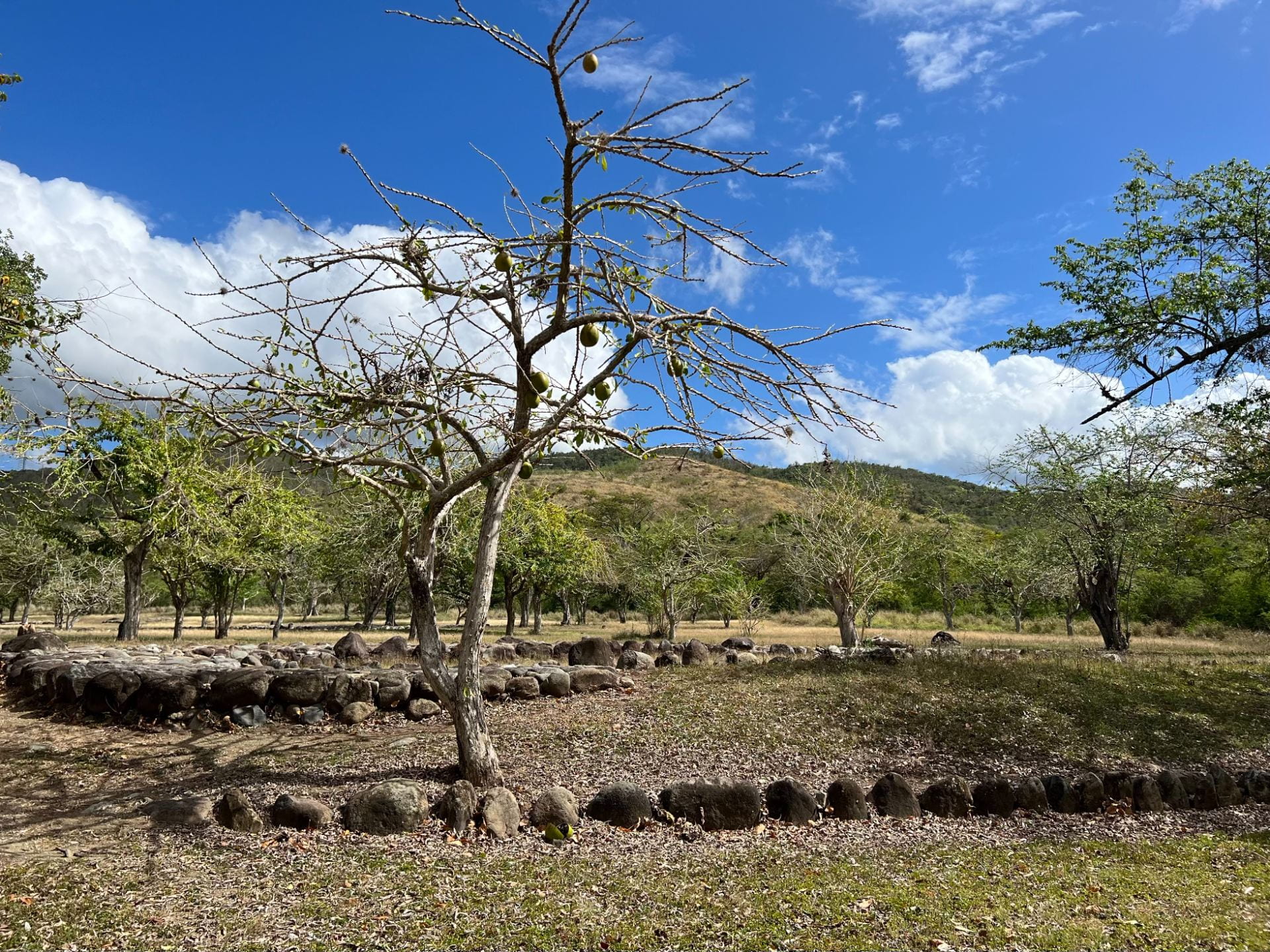
Photo by Sofía Pérez | Indigenous stone structures lie at the Tibes Indigenous Ceremonial Center. Remains and artifacts of Puerto Rico’s indigenous communities and lifestyle were uncovered in Tibes in 1975, after Hurricane Eloise caused the Portugués River to overflow. When the flood subsided, the ancient grounds were revealed.
Taíno who live in the mainland U.S. know there is a degree of separation between the original Taíno culture and how they live today. But even Taíno presently living in Puerto Rico can’t say their lifestyle mirrors that of their ancestors.
“People expect to see a Taíno from the 15th century, when the colonizers came,” said Hurakan Baez, a resident of Utuado, Puerto Rico, and a member of the Kaniba Tuun Tribe, in an interview translated from Spanish. “They say, ‘Well, how could you be indigenous and drive around in a car?’ We are indigenous people of this time, of the 21st century, where we have evolved.”
Taíno advocates emphasize how these cultural practices were lost due to colonization, not by choice. Today, many Taíno are working toward reclaiming what was taken from them. For example, many still make pottery, weave baskets, grow native foods and practice traditional medicine.
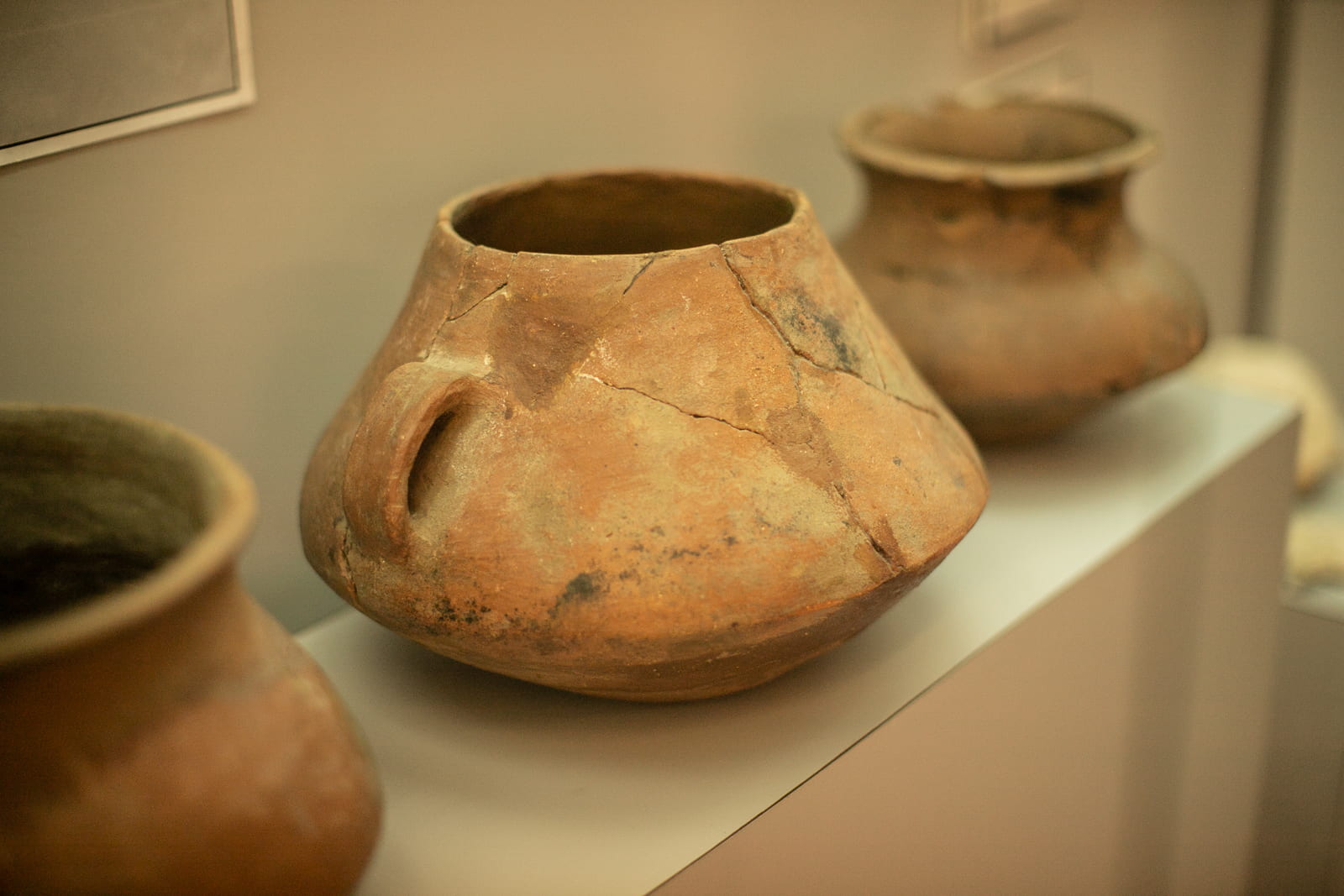
Photo by Sofía Pérez | A pot is exhibited in the Tibes Indigenous Ceremonial Center museum. It was among the remains uncovered at the center and is thought to be a relic of the Igneris people. Creating pottery is one of the ways Taíno stay connected to their roots.
“Our history, our customs, our heritage was being erased – there were only pieces left,” said Francis Omar Alvarez Hernandez, a resident of Ponce, Puerto Rico, who is Taíno but doesn’t belong to a specific tribe, in an interview translated from Spanish. “We have been putting those pieces together. To say that someone is [completely] carrying the Taíno practices 100% – no. We are a people who were literally being erased from the map and even still we persisted with sacrifice, with imprint, sometimes with many cultural losses. But we are here, trying to rescue what is being erased.”
Defending their identity is not easy, some said.
“I am still saying, ‘Look, I am Taíno because I have the genetic inheritance. I am Taíno because I’m from this neighborhood. I am Taíno because I learned how to make casabe from my grandfather,’” said Omar Alvarez Hernandez, referring to a crispy flatbread that is a cornerstone of a Taíno diet. “I am Taíno because I feel it. That is something that you always have to be telling them. If you feel it, you are. Those are the ancestors of your cultures; those are your roots.”
The nuance and legacy of who decides Taíno identity
Dones, the Taíno woman who grew up in Boston, said her Puerto Rican grandparents avoided talking about being Taíno, out of fear of discrimination and even attack. Today, as a liaison officer to UTCP and co-chair of Newton’s Indigenous Peoples Day celebration, she is the opposite. Her 11-year old son, Vinny “Tata’niki” Iraheta, “has been growing up solely on Taíno culture,” and she pursues her activism in defense of people like him.
“I’m all about sovereignty and fighting those powers that be, because our voices definitely need to be heard,” said Dones, 47. “I got really, really into activism when Vinny was getting bullied in school for being Native and his hair was being pulled and he’d be called a girl and they’re talking crap about his Native culture.” He was 7 when the bullying started. “He is not pretending. He is Indian. 100%.”
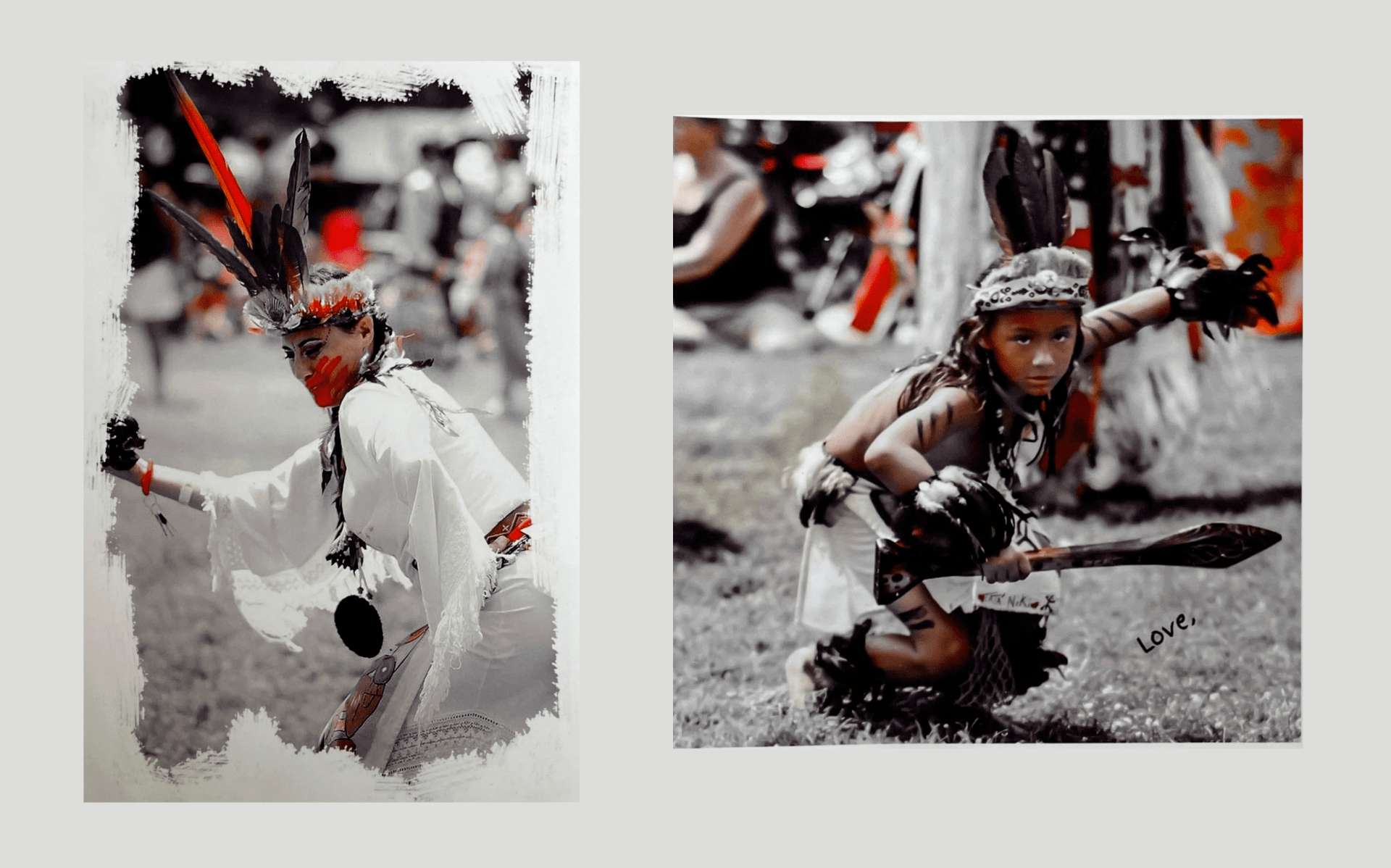
Photos courtesy of Chali’naru Dones | Chali’naru Dones (left) and her son, Vinny “Tata’niki” Iraheta, dance at the 2019 Bear Mountain Pow Wow hosted by the Redhawk Native American Arts Council of Stony Point, NY. They attended as representatives of Kasibahagua Taíno Cultural Society, a performance group.
Dones, like many others, is a fierce advocate for people identifying “however the hell” they want. But even she cannot deny the risk of misinformation and cultural appropriation that comes with loosely tossing around the identity of Taíno. Martinez has observed it in Puerto Rico and Dones herself has observed it in the mainland U.S. It can be a sensitive speed bump that is often used against a community trying to prove their identity is true.
“Some in the Taíno community, I must say, will be ‘pretendian’ and will want to claim Taíno but do nothing,” said Dones. “They don’t live the culture, they just want to parade around in feathers and act like they’re doing something for the community when in reality they don’t do nothing, they’re just there for the look. There’s a lot of them. How do we separate that? It’s really hard.”
But indeed some are making significant strides toward properly honoring Taíno history and pride. UCTP, for example, organizes a tribal registry for Taíno people and is pursuing plans to build the Taíno Embassy and Community Center in Puerto Rico, a centralized location for restorative and environmental justice advocacy. Meanwhile, opinions toward those who claim Taíno identity continue to evolve.
Curet, the curator from the Smithsonian Institution, admits he used to believe the term Taíno was obsolete, that the true identity was too diluted to be present in today’s culture. However, over time – and since engaging with Taíno people – he has changed his views.
“We cannot measure what they feel in their heart,” said Curet, who is from San Juan, Puerto Rico.
Curet is from an academic background himself. But he understands the academic lens can’t always be used to view something as complex as identity.
“We’re trained not to be biased, to keep your mind open, but most of us in academia tend to be pedantic,” said Curet. “That’s a big problem. We have these academics that are telling people who they are and who they are not without even studying them or even talking to them. I was like that too, don’t get me wrong. [Now,] I don’t feel comfortable giving clues of what it is that makes people Indian, because I think they should be the ones telling us. If they want to call themselves Taíno, who are we to stop them?”